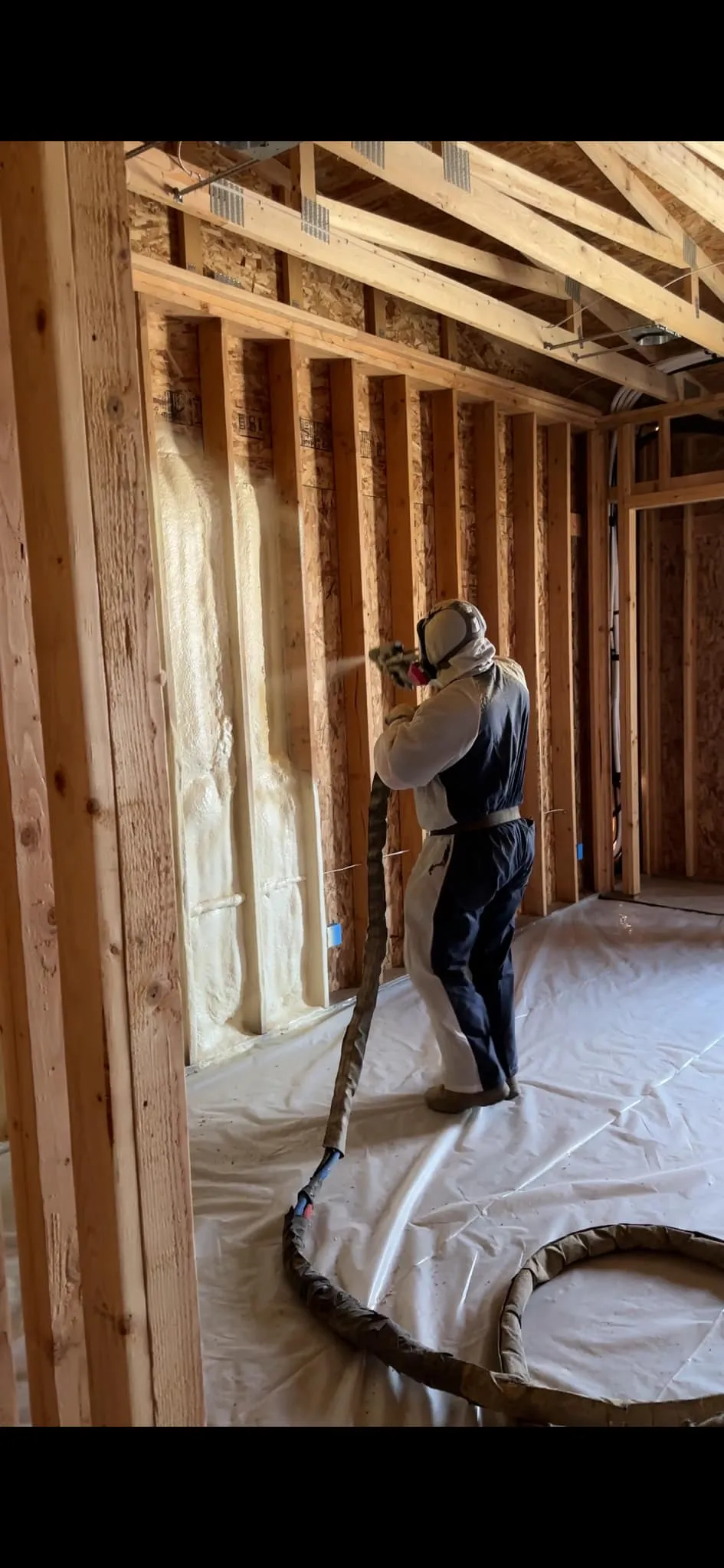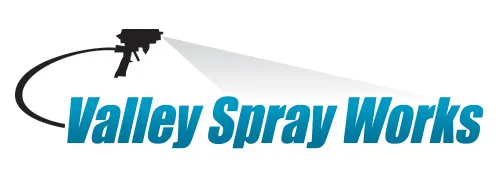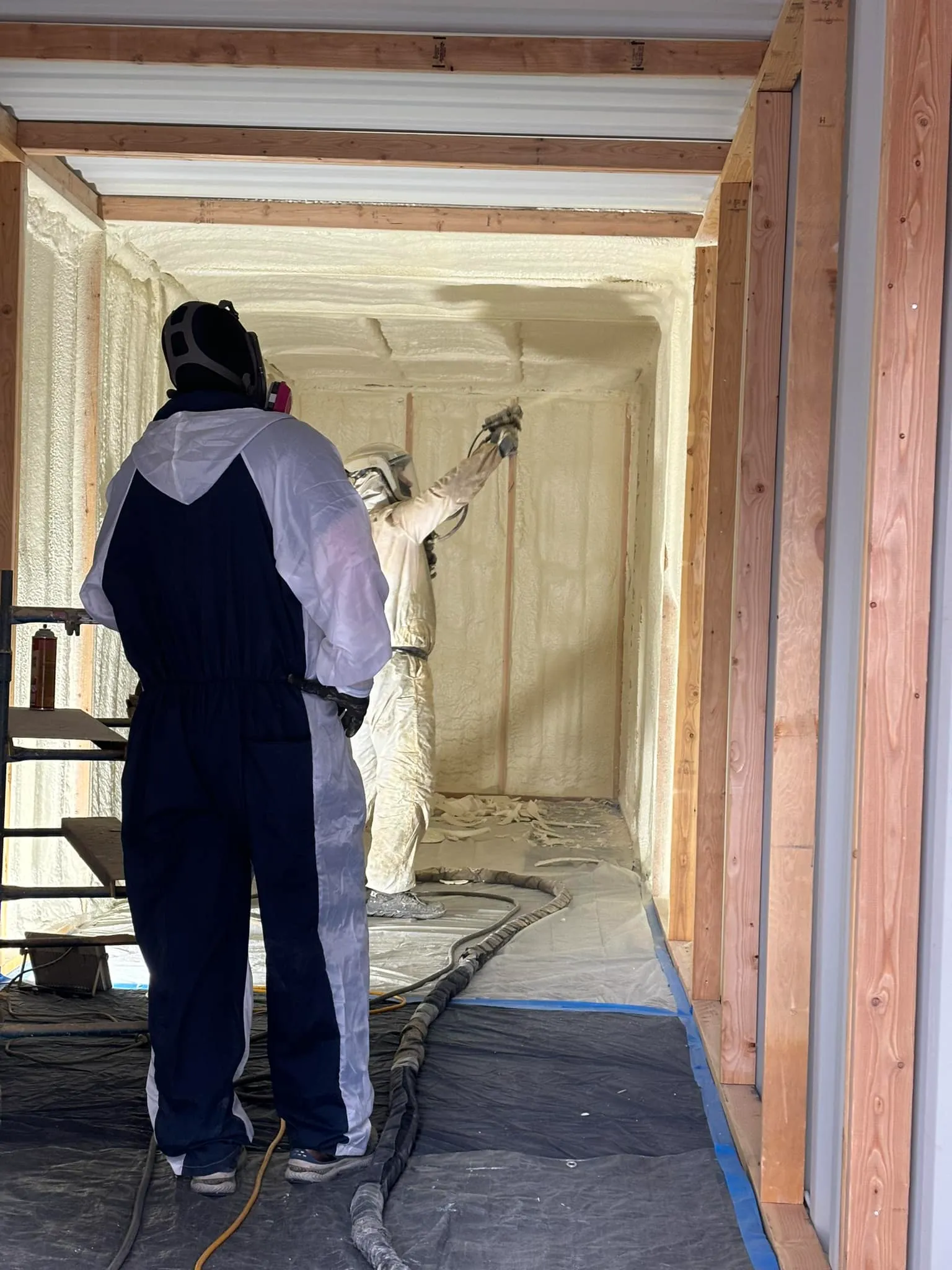Spray foam insulation supports compliance with Burley, Idaho’s energy code requirements by significantly reducing air leakage, improving thermal resistance, and minimizing moisture intrusion. Both open-cell and closed-cell spray foam exceed the insulation performance standards set under the 2021 International Energy Conservation Code (IECC), adopted by the State of Idaho.
Using spray foam in residential and commercial builds meets or exceeds R-value requirements for walls, roofs, and foundations, helping contractors avoid costly remediation or re-inspections. The insulation also enhances building envelope integrity, which is critical for meeting energy efficiency targets in Burley’s mixed-dry climate zone.
Valley Spray Works installs insulation systems based on practical experience with Idaho building types, local weather conditions, and evolving code specifications. This content outlines how spray foam meets compliance benchmarks, supported by technical specifications and verified market data.
Spray Foam Insulation Performance in Burley’s Climate Zone
Burley falls in Climate Zone 5B, characterized by cold winters, moderate snowfall, and significant temperature variation. Energy codes here prioritize insulation continuity, thermal bridging control, and vapor barrier use.
Insulation Requirements Comparison (IECC 2021)
| Building Component | Required R-Value (Zone 5B) | Open-Cell Spray Foam (R-value per inch) | Closed-Cell Spray Foam (R-value per inch) |
|---|---|---|---|
| Wood Frame Wall | R-20 or R-13 + R-5 | R-3.6 to R-3.8 | R-6.5 to R-7.0 |
| Ceiling (Unvented Attic) | R-49 | R-3.6 to R-3.8 | R-6.5 to R-7.0 |
| Floor | R-30 | R-3.6 to R-3.8 | R-6.5 to R-7.0 |
| Basement Wall | R-15 continuous | R-3.6 to R-3.8 | R-6.5 to R-7.0 |
Technical Specifications for Code Compliance
| Specification | Open-Cell Spray Foam | Closed-Cell Spray Foam |
|---|---|---|
| R-value per inch | 3.6-3.8 | 6.5-7.0 |
| Vapor Permeability | High (perm >10) | Low (perm <1) |
| Air Barrier Thickness | ≥1 inch | ≥3 inches |
| Water Resistance | Low | High |
| Sound Dampening | High | Moderate |
| Installation Temperature Range | >40°F | >25°F |
| Code Recognition | IRC & IECC | IRC & IECC |
Bonus Tip: Use closed-cell foam in rim joists or crawl spaces to meet air barrier and moisture resistance requirements simultaneously.

Regional Performance Insights and Market Data
According to the U.S. Department of Energy, buildings lose 30% of energy through air leakage. In Burley, this rate can be higher due to wind exposure and older construction. Spray foam addresses this by sealing gaps traditional insulation cannot.
A 2023 analysis from NAIMA (North American Insulation Manufacturers Association) confirms that spray foam consistently achieves blower door test scores under 3 ACH50, meeting Idaho’s code for tight building envelopes.
Things to Consider Before Making a Decision
- Wall Assembly Type: Wood or metal framing affects foam selection and thickness.
- Vapor Management: Closed-cell foam is required in moisture-prone assemblies.
- Project Timing: Foam installation requires specific temperature and humidity conditions.
- Code Path: Prescriptive vs. performance-based paths affect insulation strategy.
- Compatibility: Foam must integrate with fire-rated assemblies or coatings in some areas.
Bonus Tip: Review wall and ceiling designs early with your insulation contractor to align R-values and air sealing with local plan reviewers’ expectations.
Practical Questions People Ask Before Choosing Spray Foam
- How much thickness is needed to meet Burley’s R-values?
- Which spray foam type is allowed in wall cavities under IECC?
- Will inspectors approve foam as an air barrier on its own?
- Can it be used on the underside of roofs without vents?
Relevant Services Offered by Valley Spray Works for Code Compliance
- Open-Cell Spray Foam: Flexible and effective for interior wall insulation in residential builds.
- Closed-Cell Spray Foam: Dense, vapor-resistant option suited for basements, rim joists, and exterior walls.
- Intumescent Coatings: Applied over foam to meet fire safety code where required.
- Spray Foam Roof Insulation: Air-sealing and insulating unvented attics or low-slope roofs.
Get Expert Insulation Guidance
For insulation solutions that align with Idaho’s energy codes and Burley’s climate, contact:
Valley Spray Works
Phone: (208) 539-5281
Email: [email protected]
Discuss your building plans with experienced professionals who understand how to meet or exceed Burley’s energy performance standards.
Common Questions About Using Spray Foam to Meet Code
How does spray foam meet both insulation and air barrier requirements?
Closed-cell spray foam provides both functions when installed at minimum code-approved thicknesses.
Do inspectors in Burley accept spray foam in lieu of other materials?
Yes, if R-values and air sealing thresholds are met per the IECC path selected (prescriptive or performance).
Is vapor control needed with open-cell foam in Burley?
Yes. Use vapor retarders on the interior in cold climates to prevent condensation issues.
Can spray foam be used in older homes during remodels?
Yes. It’s especially useful in air-sealing irregular cavities and meeting updated energy codes.
How can thermal bridging be reduced when using spray foam?
Closed-cell spray foam reduces bridging by adding continuous insulation on exterior sheathing or framing.



